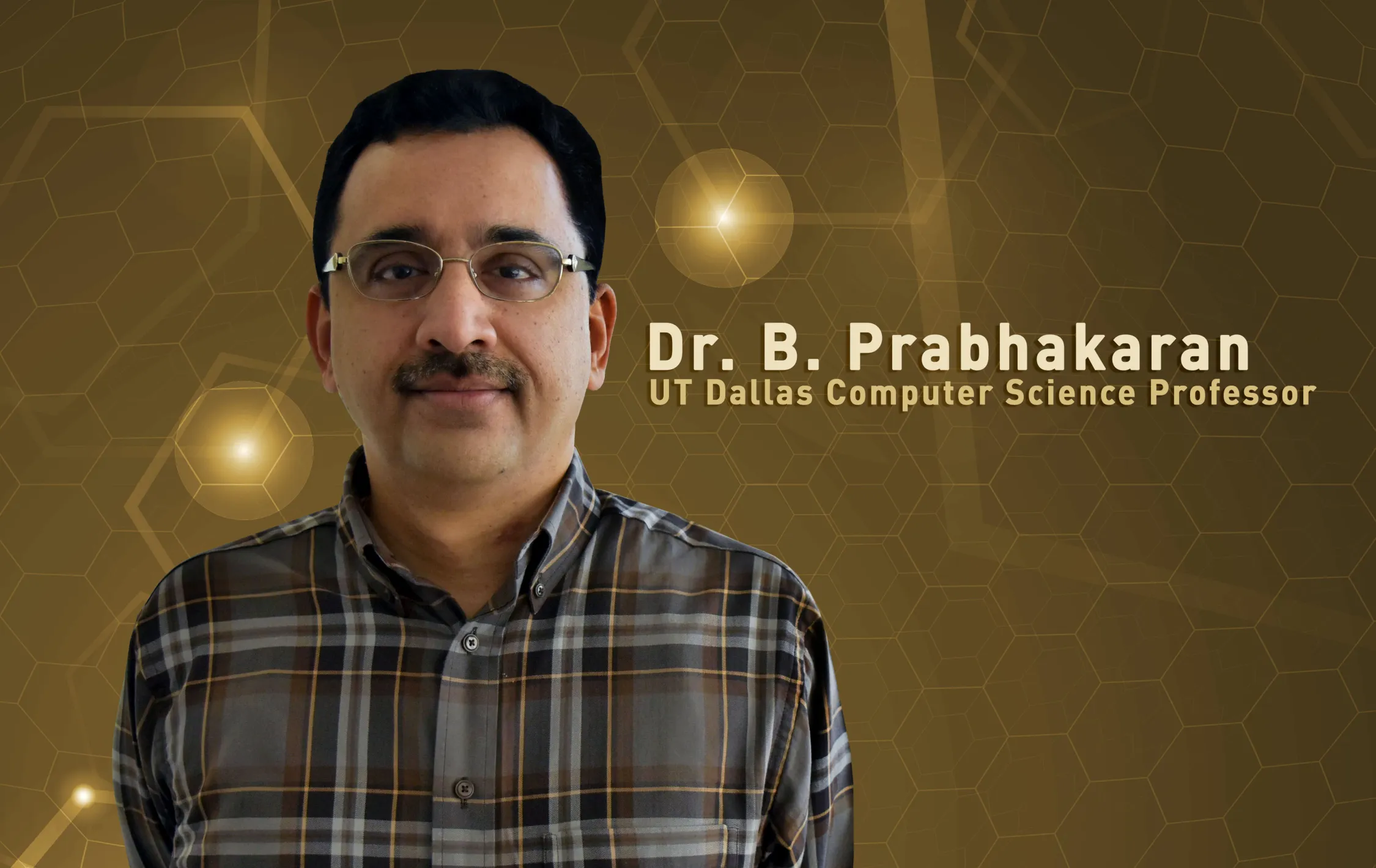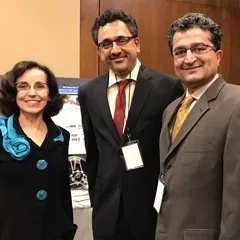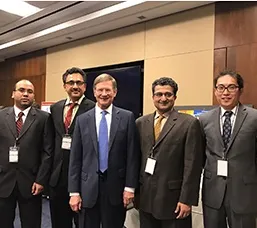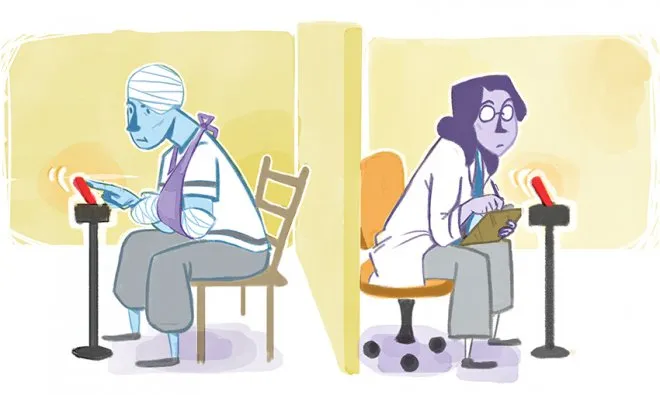Prof. Prabhakaran Shares 3D Immersive Tele-Rehabilitation Research at Capitol Hill

Via Jonsson School News – Dr. B. Prabhakaran, professor of computer science, and a team of researchers recently shared their work with U.S. congress and senate members in Washington D.C.
With advanced 3D modeling, virtual and mixed reality and networking technologies, Prabhakaran has developed remote physical therapy options, allowing veterans to receive necessary care even when a doctor can’t be on site.
“We’re building the next generation of patient care as both doctor and patient,” Prabhakaran said. “ With 3D immersive tele-rehabilitation, patients can push down on a device and a doctor’s device in another location moves with the same force, as if the patient were physically pressing the doctor’s hand.”
The team of Jonsson School researchers made the trip to Capitol Hill after an invite from the National Science Foundation (NSF) and the Coalition for National Science Funding (CNSF). At the D.C. event, titled “The Arc of Science: Research to Results,” scientists from around the nation showcased their NSF-funded research that provides services to American citizens, businesses and government.

The UT Dallas team gave demonstrations of their project to a number of congress members, including Lamar Smith and Eddie Bernice Johnson, both who represent the state of Texas.
In collaboration with a faculty and students from UT Southwestern Medical Center, Prabhakaran recently finished a series of patient trials-physicians came to UT Dallas and worked in a virtual space with patients from the Dallas Veterans Affairs Medical Center. Fifteen patients with different types of upper-arm impairments participated in the trials.
“The 3D models of users are captured by 3D Kinect cameras, and users can feel each other’s movement in real-time using a haptic device, which is a piece of equipment with resistance motors that apply force, vibration or motion to give feedback,” added Prabha.
Research on the 3D immersive tele-rehabilitation system has received over $2.7 Million over seven years from the National Science Foundation.


Source | Jonsson School News
UT DALLAS RESEARCHERS DEVELOP REMOTE THERAPY FOR WAR VETERANS

Via The Daily Texan – Doctors can now provide their patients full therapy treatment without being in the same room.
UT-Dallas computer science professor Dr. Prabhakaran Balakrishnan and his former graduate student Suraj Raghuraman have developed a 3-D rehabilitation therapy that allows doctors to take care of their patients without meeting face to face.
The therapy, which the researchers named 3-D immersive telerehabilitation, combines telerehab, a treatment which uses only phone-based communications between doctor and patient, with Microsoft Kinect cameras to add a visual component to long-distance rehabilitation.
The Microsoft camera can be modified to fit the needs of rehab patients and their various therapies.
“The inspiration came from noticing that telerehab lacked a sense of touch,” Prabhakaran said. “A 2-D video does not give a proper perspective for the doctor; when you want to examine musculoskeletal movements, it must be in 3-D because the motions themselves are 3-D.”
According to Raghuraman, the new therapy system assesses the upper parts of the body, monitoring side-to-side movements by having the patient perform tasks such as virtually sawing a log.
The 3-D camera is roughly 3 feet tall and includes touch sensors to determine the amount of force a patient applies when performing each task, according to Prabhakaran.
Fifteen veteran soldiers with upper-arm limb impairments participated in a clinical trial with 3-D telerehab. Prabhakaran said not only did the device help doctors to reach their patients, but it also benefited the patients.
“The patients were unanimous in saying that they would like more telerehab diagnoses,” Prabhakaran said.
To continue reading the rest of this Daily Texan article by Lawrence Goodwyn, please click here.
Source | The Daily Texan
ABOUT THE UT DALLAS COMPUTER SCIENCE DEPARTMENT
The UT Dallas Computer Science program is one of the largest Computer Science departments in the United States with over 2,100 bachelor’s-degree students, more than 1,000 MS master’s students, 150 PhD students, and 86 faculty members, as of Fall 2016. With The University of Texas at Dallas’ unique history of starting as a graduate institution first, the CS Department is built on a legacy of valuing innovative research and providing advanced training for software engineers and computer scientists.




